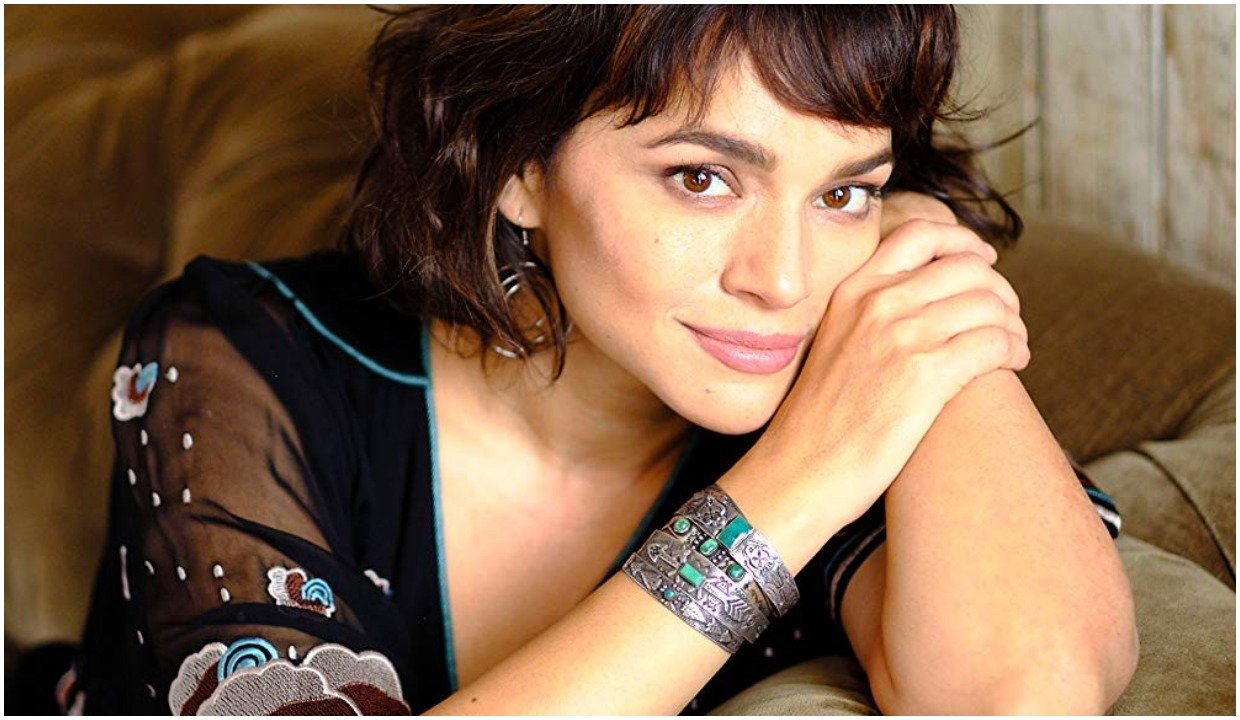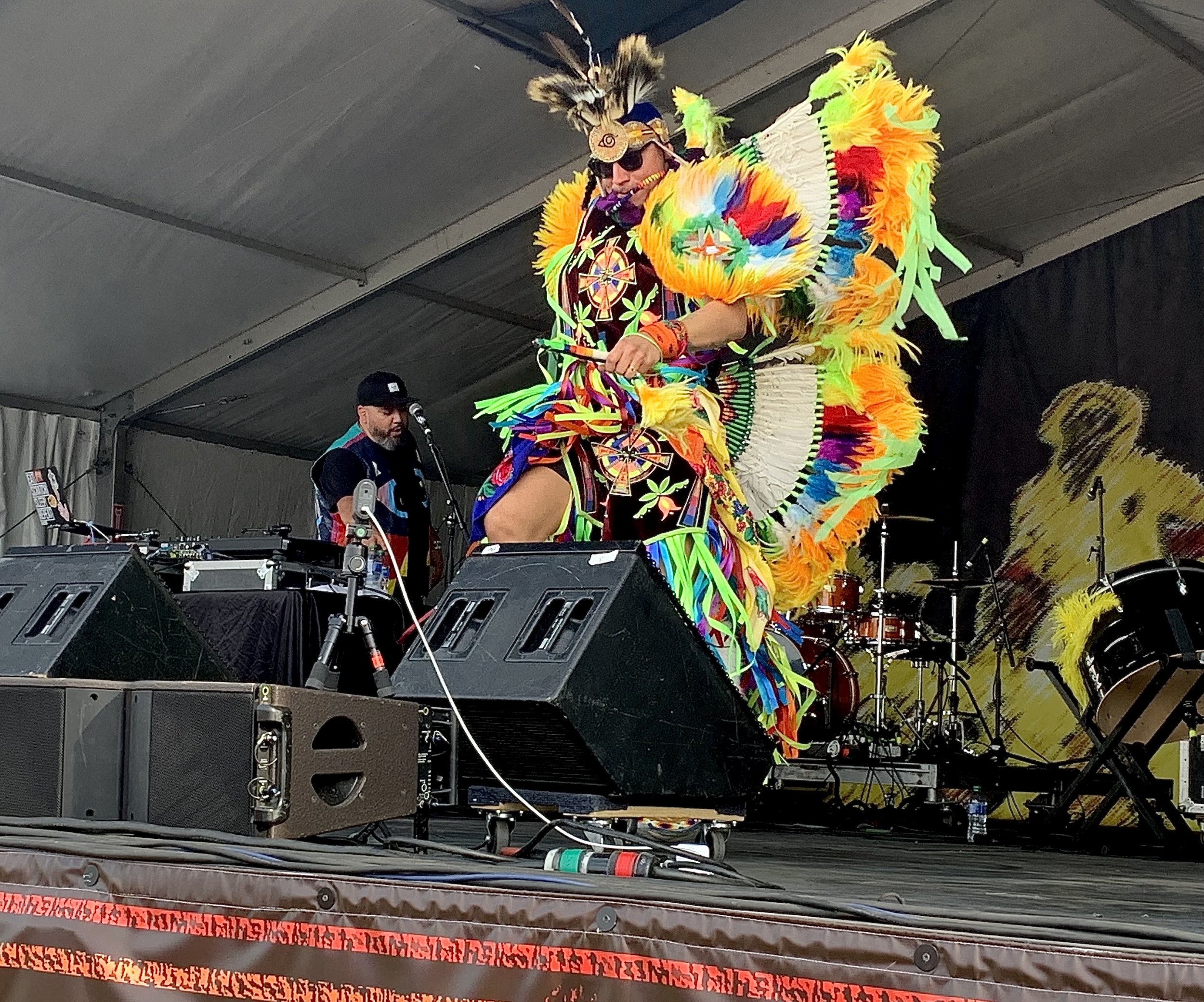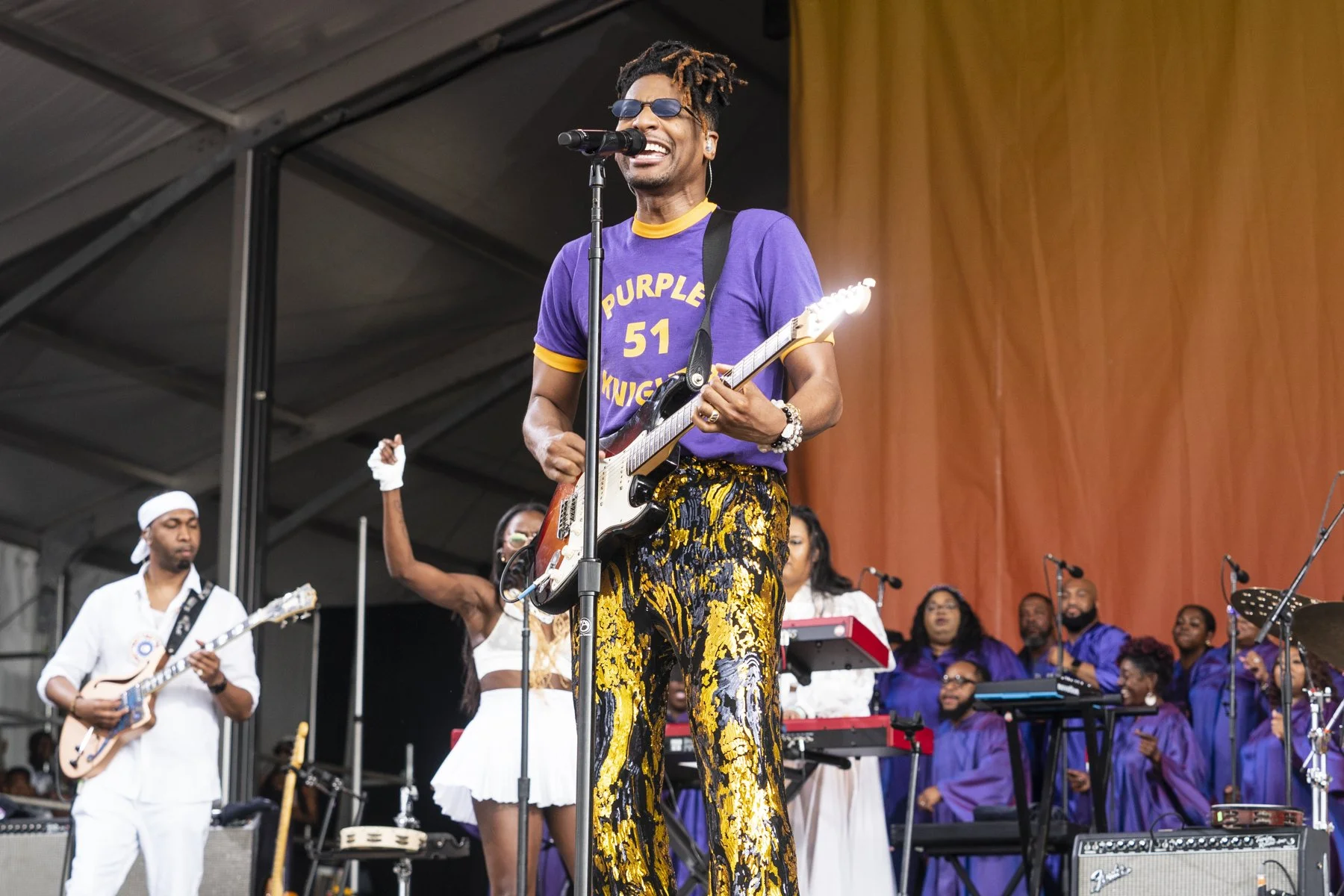Jazz Fest: David Byrne, Jon Batiste End the First Weekend on a High Note

An inessential weekend at Jazz Fest ended with two powerful, surprising sets.
[Updated] This first weekend of Jazz Fest will be remembered—to the degree that it will be remembered at all—for its extreme pleasantness. Whether because Festival Productions economized this year because they have their eye on their 50th anniversary in 2019 or because the right big ticket talent simply wasn’t available this year, the headliners were respectable but not spectacular draws. Sunday was the busiest day of the weekend with David Byrne and Jimmy Buffett topping the bill, but the crowds remained manageable throughout.
David Byrne’s set at the Gentilly Stage has received a lot of well-deserved love on social media. Since Talking Heads, Byrne has consistently reconsidered rock ’n’ roll conventions. In 1980, the band broke with punk orthodoxy on Remain in Light, where the utilitarian verse/chorus song structure was replaced by something less rigid, and the headlong charge driven by electric guitars and drums became a psychedelic, African-influenced swirl of rhythm and voices in conversation with each other. The vision of the band as a gang morphed into the band as a musical community—one that may have tiers of membership. Byrne and director Jonathan Demme approached 1984’s Stop Making Sense first as a theatrical experience instead of a simple concert documentary.
For his current tour and Sunday’s stop at Jazz Fest, Byrne re-thought the concert experience and presented his band on a blank stage, free from mic stands, monitors, and banks of instruments, amps and drums. Six percussionists wearing their drums on marching band rigs covered the drum parts, and Karl Mansfield had one keyboard mounted on a similar harness. With all that space and nothing to force the band into a static presentation, Byrne and his band were in constant motion, moving through a fully choreographed concert with a playfulness in keeping with the spirit of much of his music, which considers our world with detached bemusement. The question—“Well, how did I get here?”—in “Once in a Lifetime” boils his artistic self down to a line.
The show appeared to have roots in the high school and college color guard squads, a fascination of Byrne’s that he worked out in a handful of 2015 performances and the documentary Contemporary Color, in which he paired a number of schools’ color guards with St. Vincent, tUnE-YArDs, Devonté Hynes and other contemporary artists who created music for their routines. The result made Byrne very much a part of a unit and not the front person he easily could have been. Like color guard teams, the band including Byrne dressed alike—barefoot in three-button gray suits that looked very Kim Jong-un.
In that context, newer songs from American Utopia had an immediate hook on top of the songs themselves, which were fairly easily grasped. “I Dance Like This” edged Byrne into the tricky True Stories mode where his deadpan goofiness can read as a joke that might be on the average folk whose lives fascinate him. More commonly though, the swirling band in constant motion helped Byrne the surrealist find meaningful contexts for his evocative lines. The band’s Brazilian and Cuban percussion roots, paired with bassist Bobby Wooten’s deep grooves also made the show a deeply physical experience.
Highlights included a version of “Slippery People” that borrowed some of its arrangement from Mavis Staples, who covered the song with The Staple Singers and Arcade Fire’s Win Butler and Regine Chassagne. Her version played up the song’s soul underpinnings and praise elements, which Byrne baked into his dance and vocal Sunday. “Born Under Punches (The Heat Goes On)” seemed right on time as the lyrics’ present someone trying to find a moment of clarity and quiet in his or her mind and life. Byrne leaned back as if to breathe and coast for a moment as if he found that place, then had to churn on.
The regular set ended with “Burning Down the House,” and the crowd was ready for more Talking Heads. Instead, Byrne finished the show as he has every show on the tour so far with “Hell You Talmbout,” Janelle Monae’s musical seconding of #blacklivesmatter. The song shouts out the names of black men and women who have been killed by police, punctuated by the call to “say his name,” performed over drums. Byrne didn’t explain the song other than that he covered it with her permission, and that it’s still sadly necessary. Few around me knew what he was doing, but it was nice to see Byrne spend a little cultural capital and put something on the line. In non-festival shows on the tour, fans first got what they wanted in the form of Remain in Light’s “The Great Curve” before “Hell You Talmbout” as a second encore. At Jazz Fest and Coachella, Byrne risked being a buzzkill or sending people away confused by naming the black men and women who have been the victims of police violence. The sad part was that at six minutes long, the song was just scratching the surface.
Had it not been for Byrne’s audacious presentation, the story of the day would have been Jon Batiste with The Dap-Kings. The pairing seemingly came out of nowhere to produce a summer soul/funk tour with Batiste taking five from Stay Human to front the band that powered Sharon Jones. The results were spectacular as the band was typically funky while Batiste presented himself as a more capable R&B singer than he had previously shown. The consistent thread from last year’s Stay Human set to this year’s show is Batiste’s ability to draw from and synthesize a number of musical traditions with intelligence and emotional commitment.
The show began with a cover of Bobby Bland’s “Road of Brokenhearted Men,” a song that The Dap-Kings played with Sharon Jones. That aside, most of the set seemed to come from Batiste and New Orleans, and much like at a Sharon Jones show, the band eventually became less of the story as it supported Batiste with perfect facelessness. It did so exactly what needed to happen that the focus was entirely on Batiste. When he sang “Why You Got to Be Like That,” he did so with a rascally Dr. John growl that made sense for the song, and he arranged the Civil Rights Era anthem, “I Wish I Knew How it Would Feel to be Free,” in the image of Allen Toussaint. Toussaint’s “Java” turned into a James Booker-like workout.
Batiste’s efforts to redress the songs in others’ voices never sounded automatic, nor was the mix-and-match obvious. Everything filtered through Batiste’s musical personality, which was shaped by New Orleans’ great musicians. Add The Dap-Kings’ ability to pull together parts and styles that never coexisted in the past and the set sounded fresh, even as it settled in the ‘60s. When they paid tribute to Fats Domino and played “Ain’t That a Shame,” the band caught the nuances of the original recording that the Domino band that backed the Fats tribute Saturday moved beyond decades ago. As a result, the song hit much harder and more satisfactorily than at the tribute set Saturday.
Part of Batiste’s success throughout the show was that he trusted the song to carry its part of the load. When he sang “St. James Infirmary Blues,” he didn’t lean into the anguish and heartbreak, paying attention instead to their musical context, and he similarly avoided the temptation to go mawkish on “What a Wonderful World.” He played “When the Saints Go Marching In,” but he slowed it down and turned it into a meditative moment. He never sang the chorus, and the lyrics he sang/spoke sounded like his own, opting for something more domestic than the apocalyptic tone of the original words. In each case, the songs have such deeply ingrained associations that he let that be and worked to give them nuance instead.
Batiste is working on a new album for the fall, and it would be great if this pairing ends up on it. The show, along with last year’s Stay Human set on the Acura Stage, establish Batiste as one of the dominant musical voices from New Orleans right now.
A great start to the day: Don Vappie’s Creole Jazz Serenaders opening their Economy Hall Tent set with Thelonious Monk’s “Panonica,” arranged for a traditional jazz lineup.
For more of the first weekend of Jazz Fest, here are our reviews of Friday and Saturday.
Updated May 1, 5:47 a.m.
David Byrne played the Gentilly Stage, not the Acura Stage as initially reported. The text has been updated to reflect this correction.






